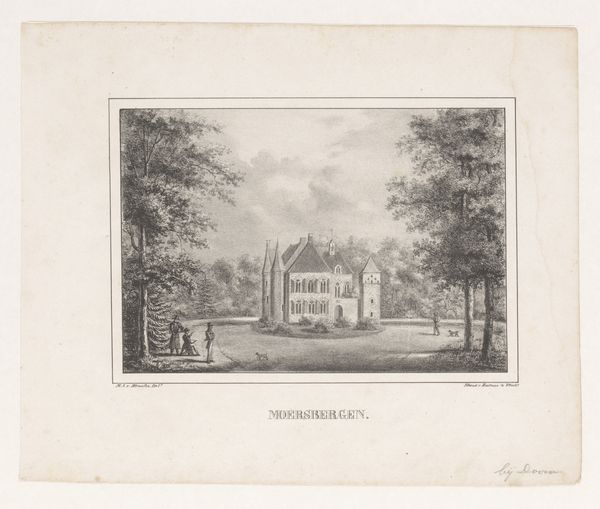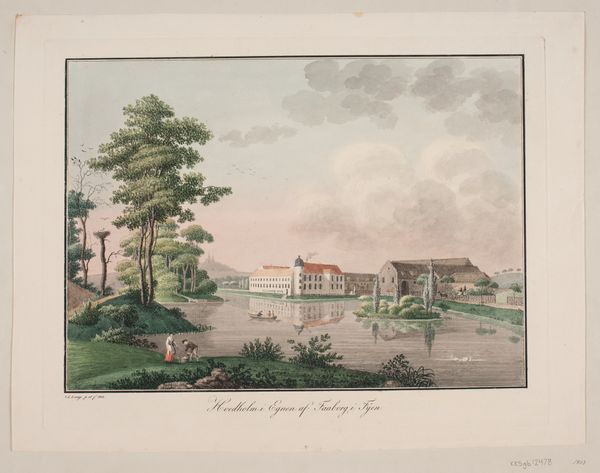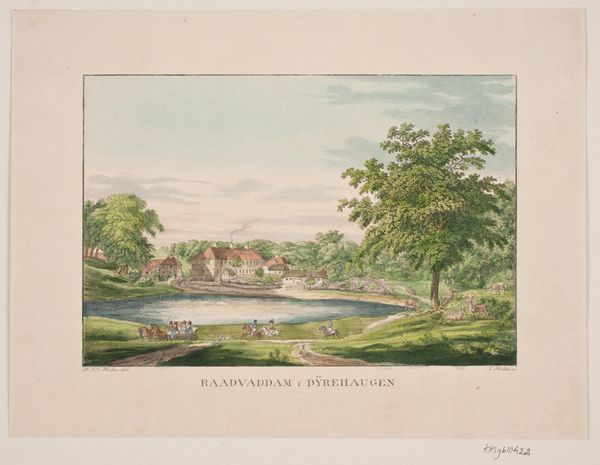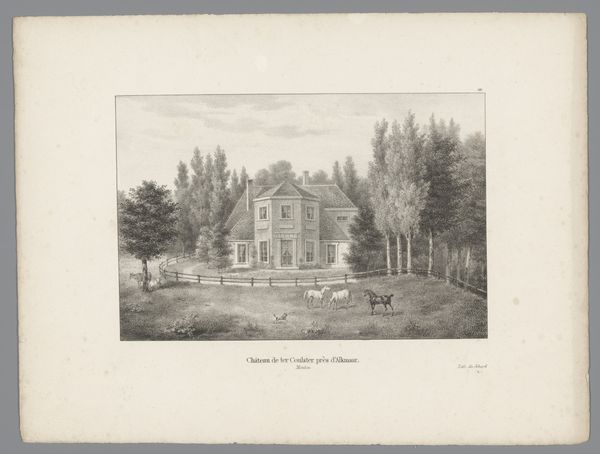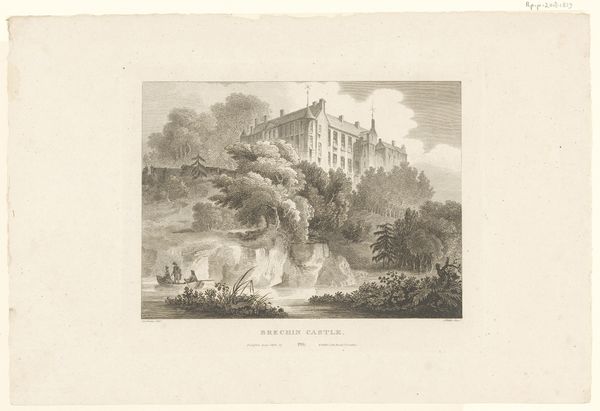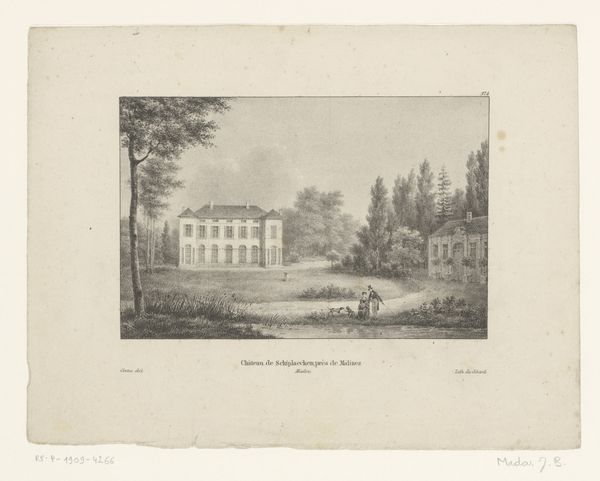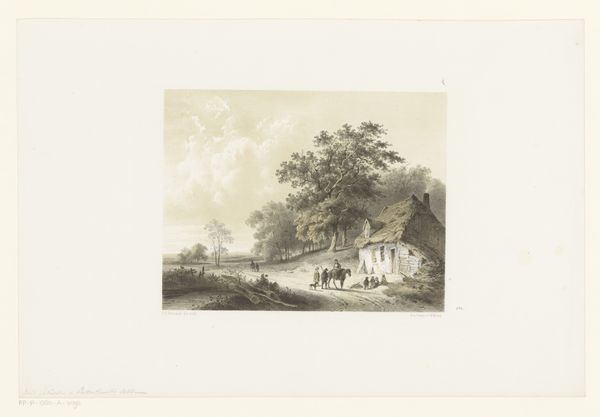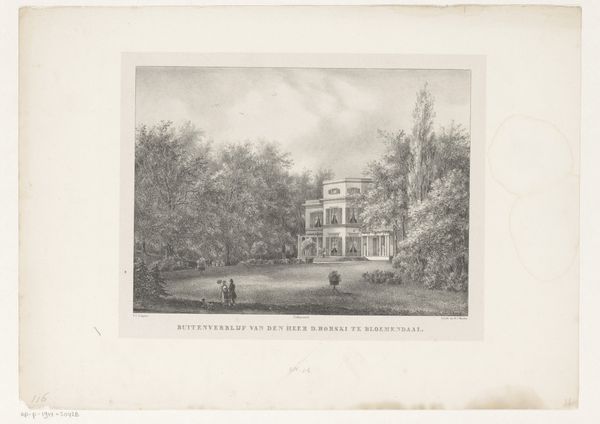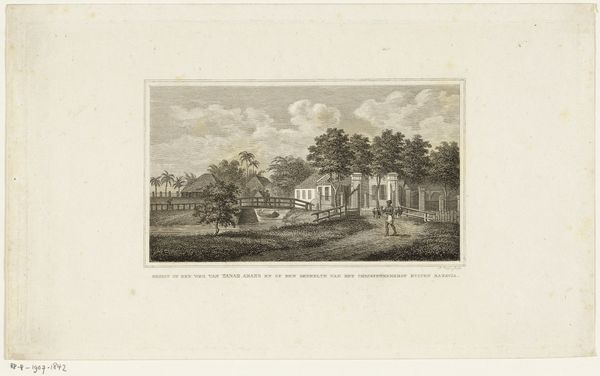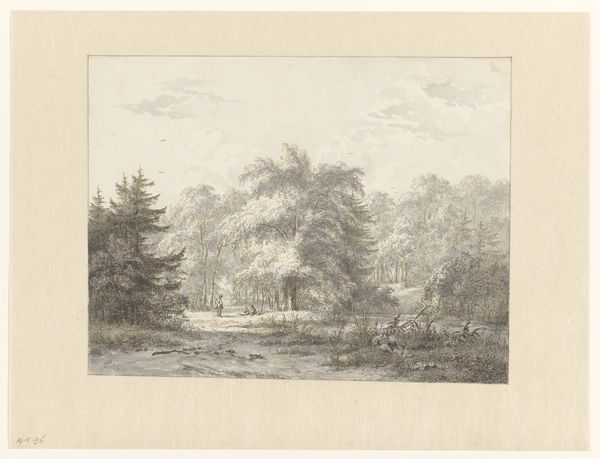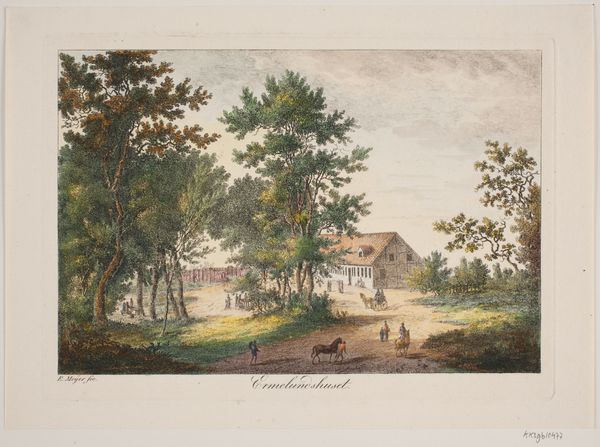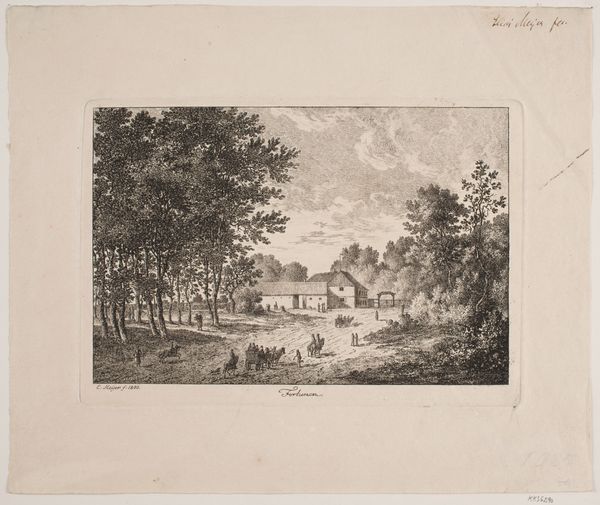
watercolor
#
neoclacissism
#
landscape
#
watercolor
#
watercolour illustration
Dimensions: height 226 mm, width 266 mm
Copyright: Rijks Museum: Open Domain
Editor: Here we have Hermanus Numan’s watercolor titled “Buitenplaats Boekenrode,” created between 1790 and 1797. It has a peaceful, almost serene quality. I’m curious, what strikes you most when you look at it? Curator: Beyond its serene surface, I see a potent representation of power and privilege embedded within the Dutch landscape. Think about the historical context: This is the late 18th century, a time of growing social inequalities masked by Enlightenment ideals. What do you make of the house's prominent position and the surrounding meticulously planned landscape? Editor: I see that the house commands a clear view of the surrounding area. Was that a common characteristic in landscape art of this period? Curator: Absolutely. But consider it more critically. The carefully cultivated nature and architecture symbolize control and ownership. It's a subtle yet powerful claim to dominance over both land and the people connected to it. Neoclassicism, as seen here, with its emphasis on order and symmetry, becomes a visual language of authority. How does understanding that influence your interpretation? Editor: It definitely makes me see the image in a new light, realizing it's more than just a pretty landscape. It reflects power structures and social class of that era. Curator: Precisely. And by acknowledging this context, we can engage in a more critical dialogue with the artwork and the world it represents, questioning the very foundations of such seemingly innocent imagery. It makes you think about how ideas around ownership and access persist today, doesn't it? Editor: It does. I thought it was just a nice watercolour, but now I realize how much more there is to consider. Thanks for helping me see past the surface!
Comments
No comments
Be the first to comment and join the conversation on the ultimate creative platform.

